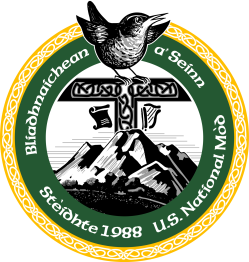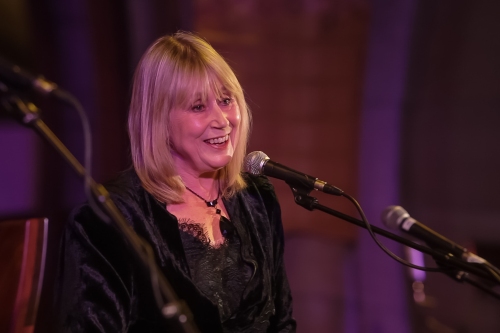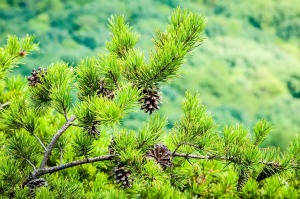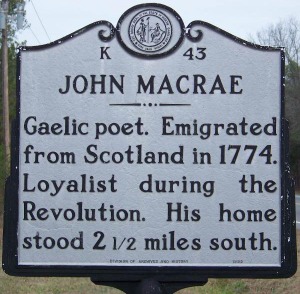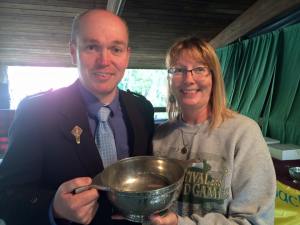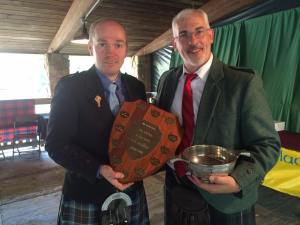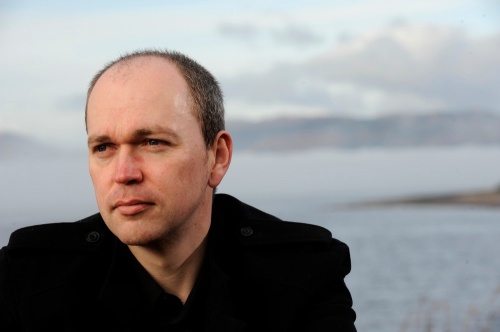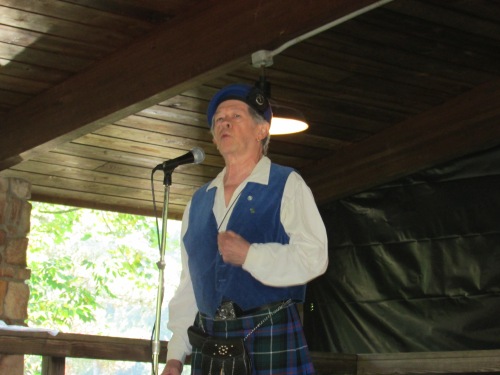
Iain Grimaldi competes at the 2014 U.S. National Mòd.
The U.S. National Mòd celebrates all the language arts of the Scottish Gaels, but Gaelic song is the foundation of the event. Most of our competitions are song competitions — from work songs to mouth music, solo singing to choral singing and our gold medal song finals.
Most of the songs are chosen by the competitors themselves, which provides the audience with a great variety of Gaelic song and our adjudicators with a real challenge: how to grade a range of competitors with varying levels of Gaelic fluency and various song types.
Several years ago, we decided to introduce prescribed songs to our Mòd, songs each competitor would have to perform if he or she wished to be eligible for the finals. These are the male and female prescribed songs for the Bonn Òir in Scotland’s Royal National Mòd.
The prescribed song competition give the adjudicator a chance to establish a “base” score for each competitor and fairly compare their abilities before they proceed to the “own-choice” competitions. The prescribed song is only mandatory for those entering the finals.
This year, the prescribed song for women is “Tha mo rùn air a’ ghille,” while the prescribed song for men is “Tìr ìosal mo ghaoil.” The Mòd materials available to registered competitors include the sheet music and lyrics (but not a translation) and a recording of the lyrics.
The history of these songs, however, is often as fascinating as the songs themselves. With many Gaelic songs, the actual poem or lyric is the tip of an iceberg, floating atop a mass of tradition and storytelling hidden below the “water-line” and invisible to the casual listener.
That is certainly true of our prescribed women’s song this year. “Tha mo rùn air a’ ghille” will be well known to many competitors: Not only has it long been in Mòd songbooks from Scotland, it is known in Cape Breton as well, and has been recorded by Mary Jane Lamond.
What’s the story behind this song? The verses tell of a young woman’s love for a soldier, “fear chùil duinn ‘s an leadain bhòidhich,” who she would gladly follow, even though he’s a redcoat. “‘S mi gun siùbhladh leat thar m’ eòlais, ged tha ‘n còta ruadh ort.”
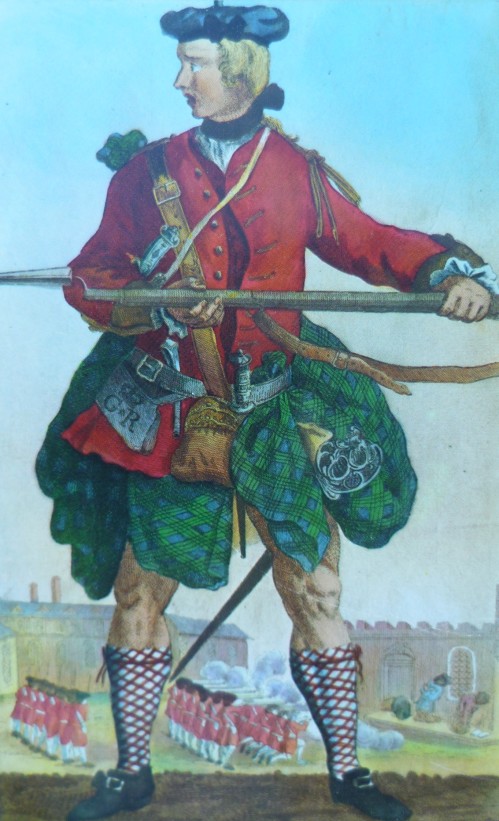
He apparently has rejected her, and grown “suarach” toward her — shedding her as a tree sheds its leaves, something she says she could scarcely have imagined a year earlier.
But who was the young woman? Where did she live and when, and who was the absent soldier who loved and left her? As with many Gaelic songs, there’s more than one version of the lyrics, and more than one story about the origins of “Tha mo rùn air a’ ghille.”
Our sheet music identifies the composer as Catrìona Munn of Muile but provides no further information. Several sources on Tobar an Dualchais, the enormous online archive of Scottish tradition in Gaelic and Scots, identify her by her English forename, Catherine Munn. The song was published in An t-Òranaiche in 1879, which dates it to the 19th century, at latest. However, An t-Òranaiche again provides no information about the composer. In 1903, Volume XI of The Celtic Monthly: A Magazine for Highlanders had this to say:
“THIS Song was composed by Catherine Munn, daughter of Hugh Munn, tide-waiter, Tobermory. She died in Mull, 3rd June, 1860, aged sixty-five years. It is generally understood that the song was composed about 1820, the hero of the song being Captain John Campbell, Killundine, Morve(r)n. This property was afterwards sold to Col. Cheape and in this family it still remains.”
That puts Catrìona’s birth at about 1795, and suggests she composed the song while in her twenties. A tide-waiter wasn’t someone who lounged on the shoreline, but a customs inspector who would board ships on arrival, in Hugh’s case at Tobermory on Mull.
As for Captain John Campbell, Killundine on the Morvern peninsula in Argyll is the Chill-Iùndainn mentioned in the song, though the place name is also spelled Cill Fhionntain — Fintan’s Church. Killundine is the site of Caisteal nan Con, the “Castle of the Hounds.”
You can virtually travel the district today on Google Maps, which has a “street view” of the B849 as it winds its way along the Sound of Mull toward Drimnin.
However, there’s another origin story for “Tha mo rùn air a’ ghille.”
In “The Gaelic Bards from 1715 to 1765,” the great Nova Scotian Gaelic scholar Alexander MacLean Sinclair (1840-1924) attributed the song to “Mrs. Campbell of Barr,” or “Bean a Bharra,” Barr also being in Morvern. The otherwise unnamed Bean a Bharra was the daughter of Donnachadh Dubh Notair, “a prominent notary and conveyancer in Argyleshire,” according to Sinclair. “She was well educated, and possessed good poetic gifts.”
Mrs. Campbell also feuded with one of the greatest Gaelic poets of the day, Alasdair Mac Mhaighstir Alasdair. She was, Sinclair said, “a zealous Hanoverian.” She died, he wrote, before 1786, at about the age of 70.
“We have seen it stated that the song “Tha mo run air a’ Ghille,” was composed by her,” Sinclair wrote, “but we are not in a position to affirm as a fact that it was.”
He included it in his book regardless.
If you are in a position to affirm any fact about this song, please contact us and feel free to do so! In the meantime, here are links to two recordings of the song:
1) From Islay, Scotland, a version of “Tha mo rùn air a’ ghille” sung by Mary Livingston, collected in 1953 by Calum MacLean. Available on Tobar an Dualchais.
2) From Cape Breton, Sandy Campbell sings “Tha mo rùn air a’ ghille.” This recording was made in 1973 and is in the Beaton Institute’s collection.
— Liam Ó Caiside
